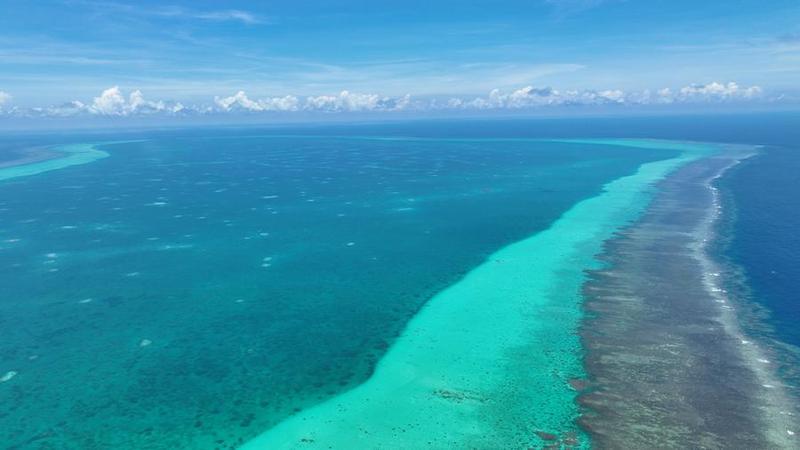China vs India: The Belt & Road and the String of Pearls
The recent unprecedented deterioration of Indo-Maldives relations and the docking of a Chinese ‘research’ ship in the islands has sparked concerns about the resurgence of the Chinese strategy of the famed ‘String of Pearls,’ which aims to encircle India with Chinese outposts to maintain its dominance on its neighbor. The courageous audacity of a small country that largely depends on Indian tourists to challenge India has sent shockwaves across diplomatic channels. China’s strategic push through the Kyaukphyu Port in Myanmar (apart from China’s naval base in Cambodia, Hambantota in Sri Lanka, and Gwadar in Pakistan, apart from a naval station at the port of Djibouti) threatens India’s nuclear attack submarine base on India’s eastern command. While India has upped its naval surveillance of its territorial waters, the threat of Chinese aggression in the future poses a severe challenge. Over the past years, India has banned Chinese apps & websites, increased cooperation with Japan, and only recently awarded Young Liu, CEO of the Taiwanese company Foxconn, with the prestigious Padma Bhushan.
American researchers first used the phrase as a geopolitical hypothesis in 2004, outlining the Chinese threat to India’s national interest. In the past decade, China’s Belt & Road (BRI) initiative and the China–Pakistan Economic Corridor (CPEC) have scheming strategies for world dominance and raised significant security concerns for India, which has expressed reservations and concerns about BRI, a massive infrastructure development project aimed at enhancing economic connectivity across Asia, Europe, and Africa, including the Silk Road Economic Belt and the 21st Century Maritime Silk Road. India has had a chequered history over decades, prompting foreign affairs experts to position colossal China as India’s primary adversary over the tottering Pakistan.
The Indo-China Relationship Dynamics:
Border Disputes: The longstanding border disputes, particularly along the Line of Actual Control (LAC), have been a source of tension. The Doklam standoff in 2017 and the deadly clash in the Galwan Valley in 2020 heightened concerns about territorial integrity and security. As per media reports, China has continued to hold significant territories in Ladakh since 2021.
Strategic Influence: China’s expanding influence in the Indian Ocean region, often associated with the ‘String of Pearls’ strategy, has raised concerns for India. Developing ports and infrastructure in neighboring countries has been seen as a potential strategic challenge.
Economic Competition: Economic competition between China and India in various sectors can be viewed as a challenge. Both countries are emerging as major economic powers, and their economic interests occasionally intersect, leading to competition in trade and investments.
Military Modernization: China’s military modernization, including advancements in technology and the expansion of its naval capabilities, has been closely monitored by India. This has implications for the regional balance of power and India’s defence strategy.
Cybersecurity Concerns: As with many countries, India faces cybersecurity challenges, and concerns have been raised about potential cyber threats originating from China. Cybersecurity issues could impact national security and economic interests.
Geopolitical Alliances: China’s alliances and partnerships in South Asia and beyond can influence regional geopolitics. India monitors these developments to assess potential impacts on its security and diplomatic interests. The effect of the String of Pearls on India is a subject of strategic and geopolitical analysis. Some concerns raised by experts include:
Military Encirclement: One of the primary concerns is that the strategic locations chosen for development under the String of Pearls, such as ports and naval facilities, could encircle India. This could allow China to influence and control key maritime routes in the Indian Ocean.
Security Threats: Establishing Chinese military facilities in various countries along the Indian Ocean could be perceived as a security threat. Concerns exist that such facilities may be used to monitor and disrupt maritime activities, impacting the region’s security.
Economic and Trade Impact: Developing infrastructure projects, economic zones, and ports under the String of Pearls could influence trade routes and economic partnerships. There are fears that this could give China greater economic leverage and influence in the region, potentially affecting the economic interests of other countries, including India.
Geopolitical Tensions: The String of Pearls strategy has the potential to contribute to increased geopolitical tensions in the Indian Ocean region. As China expands its presence and influence, it may reconfigure alliances and partnerships, creating a more complex geopolitical landscape.
Sovereignty Concerns: Some countries in the region may have concerns about their sovereignty being compromised by hosting Chinese military facilities or participating in Chinese-led infrastructure projects. This could lead to tensions between the host countries and other regional players.
Solutions & Approach
Diplomacy and Dialogue: Strengthen diplomatic ties with countries involved in the String of Pearls strategy and engage in open and constructive dialogues to address concerns and find common ground. India must foster regional cooperation and partnerships to build a united front against potential threats by strengthening existing alliances and forming new ones to enhance collective security.
Re-examine The One China Policy: India, like many countries, follows the ‘One China’ policy, recognizing the People’s Republic of China (PRC) as the legitimate government of China. As a result, India does not officially recognize Taiwan as a separate, independent entity. The One China policy has been a longstanding principle in India’s foreign policy to maintain diplomatic relations with the PRC. However, India could re-examine its long-stated policy to counter Chinese influence.
Quad Cooperation: India is a critical participant in the Quad, a strategic forum comprising the United States, Japan, Australia, and India. The Quad aims to promote a free and open Indo-Pacific and address common security and economic challenges.
Economic Engagement: Invest in economic development and infrastructure projects in the region to counterbalance the economic influence of the String of Pearls strategy. This could involve partnerships with other nations and international organizations to promote economic growth and stability.
Regional Security Cooperation: Enhance regional security cooperation by participating in joint military exercises, intelligence sharing, and other collaborative efforts to ensure the stability and security of the Indian Ocean region. Strengthen naval capabilities and maritime security to protect national interests and maintain a robust defense posture.











